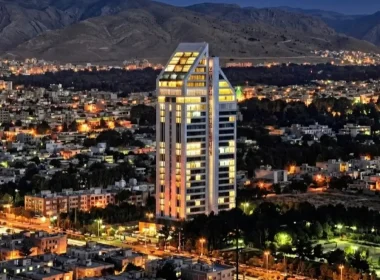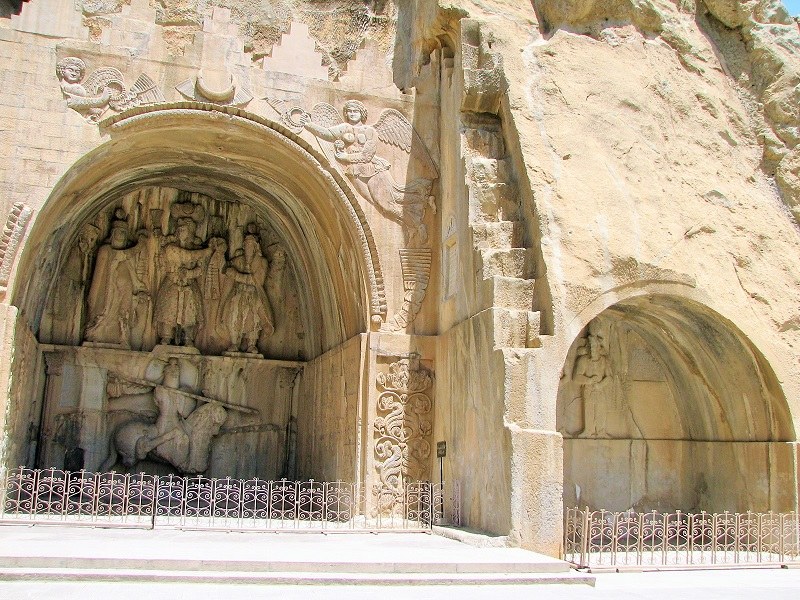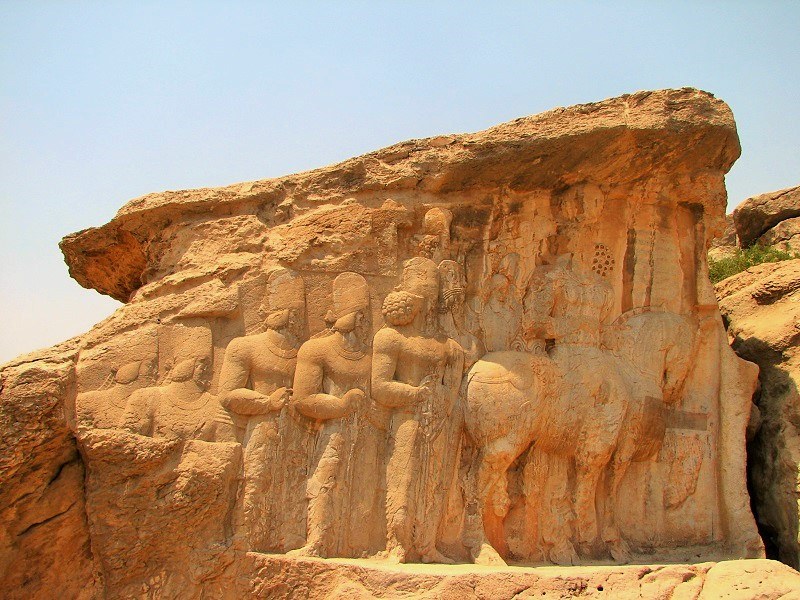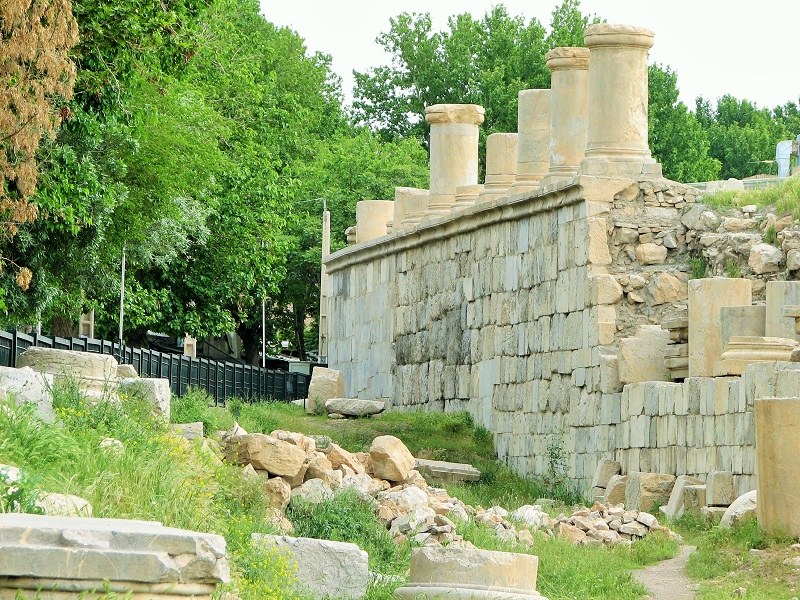
The historical monument of Kangavar, known as Anahita Temple or Palace of Khosrow Parviz, is located in Kangavar city, Kermanshah province of Iran. Archaeologists have studied and researched a lot at this area and have recorded valuable results that you will read below:
Kangavar city is limited from the east to Hamedan city, from the west to Sahneh county, from the southwest to Lorestan province and from the northwest to Sonqor county.
A very interesting point about the ancient and historical monuments of this city is that some of them are inscribed in archaeological studies are as old as the other ancient monuments found in other parts of Iran.
For example, in terms of historical value, the historical mound of Godin, an ancient relic of Kangavar, is among the oldest historical mounds of Iran, such as Sialk mound of Kashan. Godin mound is located in Godin district, 10 km east of Anahita Temple.
Anahita Temple, the Largest Historical & Ancient Pre-Christendom Monument
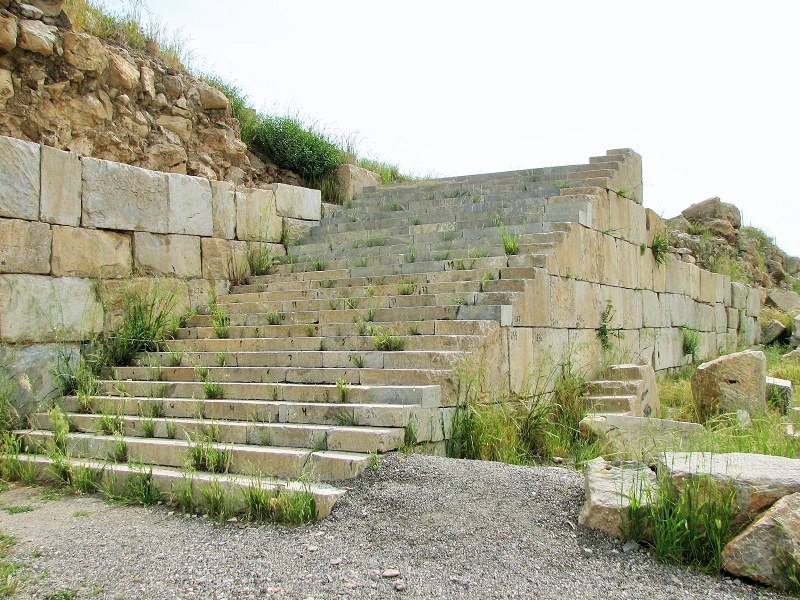
After the ancient monuments of Persepolis, Anahita Temple of Kangavar is the largest stone building of ancient Iran. Documents derived from archaeological findings have linked the Anahita Temple to the Achaemenid, Parthian, and Sassanid periods.
The historical area of Anahita Temple is located on Hamedan-Kermanshah road, overlooking Kangavar Plain. Archaeologists have studied the area to determine who ordered the construction of such a huge monument.
Seyfollah Kambakhsh, an Iranian archeologist, estimates that Anahita Temple dates back to the Achaemenid, Sassanid, and Parthian periods. On the other hand, Massoud Azarnoush, another Iranian archaeologist, believes that the construction of this monument relates to the rule of Khosrow Parviz.
Unfortunately, natural disasters over time have changed the appearance of the Anahita Temple and destroyed many parts of it. The remains of this ancient monument show that the architects built the temple on a mound with a height of 32 meters higher than the grounds adjacent to it.
The aerial map of Anahita Temple shows that it is a large rectangular temple with dimensions of 209 X 242 meters. There are giant boulders used in the construction of temple walls and columns.
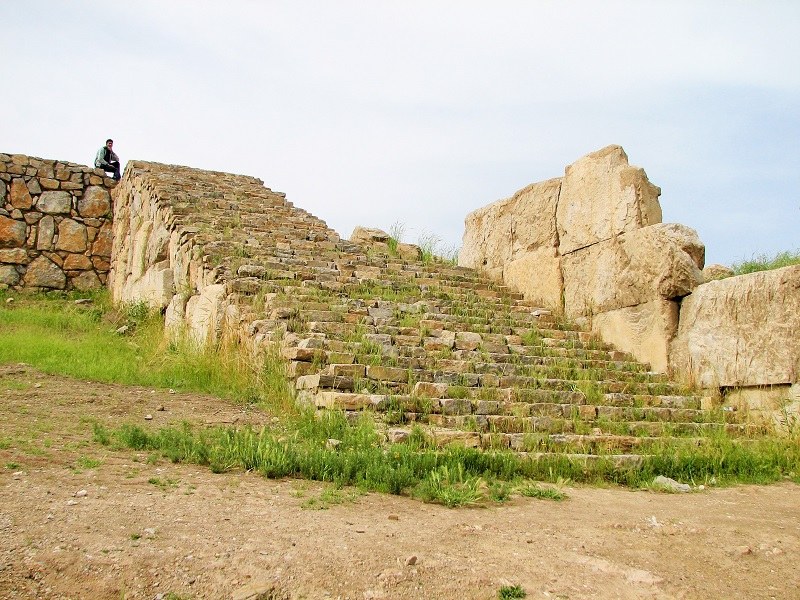
Architects have used stone, gypsum, and lime to build this mesmerizing ancient monument. They have decorated the facade of the walls and stone columns with carved designs. The presence of several stairs on the southern, western and eastern parts of this huge monument has created an eye-catching effect.
The European archaeologists who have studied about Anahita Temple believe that the architecture of the temple is based on the Greek architectural style.
Among the many archaeological opinions and assumptions about the Kangavar Monument, the opinion of Ardeshir Hadadian, an Iranian archaeologist, is that the temple dates back to the 4th century BC.
It is likely that the architects built this monument during the rule of Ardeshir II, a king of the Achaemenid Empire. Today, the remains of Anahita Temple are historically quite valuable.
In terms of etymology, Anahita means purity and sanctity. Ancient Persians believed that the Anahita, the Goddess of Water, was the guardian angel of springs and rain, and the symbol of love and friendship.
The stone columns of Anahita Temple have are of thicker diameters compared to the columns found in most of the ancient Iranian monuments. The stairs at the entrance of this temple were the gateways to this place. Archaeologists have found valuable antiquities on the site.
They have discovered decorative objects such as golden earrings, Achaemenid coins, as well as coffins, tombs, and huge columns with beautiful carvings in the area.
Historians’ Opinions about Khosrow Parviz Palace
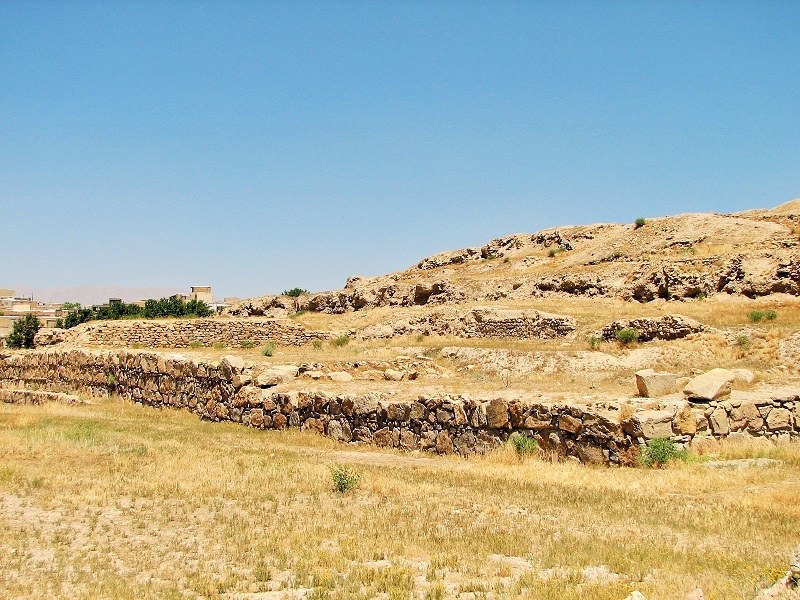
Various people have different opinions about this monument. In his book, General Percy Sykes estimates that Khosrow Palace must be in the western part of the Zagros Mountains, built around the 7th century.
He believes that the palace has a space of about 6000 meters. In the past, there were many trees in the gardens of this palace. Except for the roots of palm and pomegranates trees, today nothing has remained in the palace. The building of Khosrow Parviz Palace is located in an area historically important in different eras.
What We Can Visit Today
Unfortunately, what remains today from the monument of Kangavar, Anahita Temple or Khosrow Parviz Palace, is just some ruins. Undoubtedly, more explorations and studies will reveal the secrets of this monument. Today, Iranian and foreign tourists visit the remnants of these huge monuments and feel amazed. It surprises many people from around the world every year.




